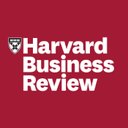
By Adam Waytz
March 15, 2023
Organizations must stop conflating activity with achievement.

Your calendar may need more white space./iStock image
In my 2019 book, The Power of Human, I recount an anecdote about a man who immigrated to the United States and soon came to believe that the word “busy” meant “good” because when he asked people, “How are you doing?” they often responded, “Busy.” Nora Rosendahl, the chief operating officer of the performance coaching firm Hintsa, discovered the same thing when she conducted a small social experiment by documenting answers to the question “How are you?” over the course of a week. By her count, nearly eight out of 10 people said, “Busy.”
Academic research suggests that our days are becoming increasingly jam-packed. One analysis of holiday letters indicates that references to “crazy schedules” have risen dramatically since the 1960s, for example. And an analysis of Gallup data by Harvard Business School’s Ashley Whillans found that the percentage of employed Americans reporting that they “never had enough time” rose from 70% in 2011 to 80% in 2018.
The reasons for the rise in “time poverty” (as social scientists have termed it) are numerous and nuanced, but corporate cultures that value busyness are at least partially to blame—and in theory should also be easy to correct. Put simply, busyness has become a status symbol. Research led by the Columbia marketing professor Silvia Bellezza shows that people perceive others who are busy—and who use products indicating they’re busy (like a Bluetooth headset for multitasking)—to be important and impressive. In addition, newly published studies led by the psychologist Jared Celniker have found that across the United States, France, and South Korea, people consider those who exert high effort to be “morally admirable,” regardless of their output. This is a marked change from bygone eras. As the sociologist Jonathan Gershuny notes, “Work, not leisure, is now the signifier of dominant social status.” Or as Gordon Gekko puts it more prosaically in the movie Wall Street, “Lunch is for wimps.”
But when it comes to corporate life, busyness is not a virtue, and it is long past time that organizations stopped lionizing it. Evaluating employees on how busy they are is a terrible way to identify the most creative and productive talent. Yet many firms reward and promote only people who display how “hard” they’re working. The effect on companies and their employees is significant. Research indicates that when organizations overload employees, base their incentives primarily on the amount of time they work, and excessively monitor their activities, productivity and efficiency actually drop. Exhaustion among employees can increase turnover, at considerable cost to firms’ financial performance. Even if employees don’t leave, busyness harms the bottom line by reducing staff engagement and increasing absenteeism. It also impairs workers’ health: A 2021 World Health Organization report showed that overwork can increase the risk of stroke, heart disease, and ultimately death. Conversely, research suggests that reducing working hours to manageable levels can enhance productivity.
My sense is that managers now are more open to reconsidering the value of busyness than they have been in a long time. A tight labor market that has increased the negotiating power of overstretched employees is one factor here, but the pandemic has changed the corporate zeitgeist, as time away from offices has led people at all levels to reassess their relationship with their jobs. Last year a TikTok post about “quiet quitting”—when employees refuse to work beyond their prescribed tasks and hours—went viral and became the subject of a media frenzy. Certainly, there’s something in the air.
Drawing on academic research that I and others have done and on my experience advising companies looking for humane, productive ways to help employees manage their time, I have uncovered several reasons why the obsession with busyness persists even in today’s knowledge economy. I’ve also identified practical solutions for companies trying to break out of this widespread but destructive pattern.
WHY WE REVERE BUSYNESS
One of social psychology’s canonical findings is that the harder people work to achieve something, the more they value it. Known as “effort justification,” this tendency arises even when a task is meaningless. And the more demanding the effort is, the more commitment people feel. New hires forced to work long hours on a graveyard shift, for instance, might persuade themselves, If I work this hard, I must really want to be here. The problem is that while we go on justifying the slog, we fail to notice burnout creeping up on us.
Once a culture of busyness is established, it tends to persist unchallenged. In an influential 1988 article, the management scholars Blake Ashforth and Yitzhak Fried wrote that a lot of organizational behavior is mindless. Production workers “go on automatic,” employees follow established rules and procedures without questioning their effectiveness, and managers make hires and promotions based on superficial cues and first impressions. Indeed, much of what managers believe to be institutional knowledge and culture is actually just bad habits.
Dru Armstrong, an experienced CEO whom I have done some consulting work for and who is now the head of the fintech company AffiniPay, has observed that sometimes “busyness becomes the fabric of organizations.” In other words it gets embedded in day-to-day activities unless leaders can explicitly root it out through a strategic plan. “Absent very clear strategic priorities, people create endless amounts of work based on what they think matters,” she explains. “You’ll say, ‘I need you to focus on this priority,’ or ‘I need you to move on price,’ or ‘We need to go buy a company or partner with a new organization.’ And everyone goes, ‘Well, I can’t—I’m way too busy.’ And then you say, ‘Busy doing what?’”
When organizations encourage busyness, employees rarely resist. That’s because even if they recognize the downside of unproductive efforts over the long term, in the moment they deplore idleness. In one famous experiment, the psychologist Timothy Wilson and his colleagues found that 67% of men and 25% of women chose to press a button to electrically shock themselves rather than sit still with their own thoughts in a lab room. Before entering the room, participants had stated that they would pay money to avoid an electric shock, but once they were left alone, the inactivity became too much to bear, and people sought to fill the void.
Other work on “idleness aversion” led by the behavioral science professor Christopher Hsee shows that people will choose to do something that keeps them busy (such as disassembling and reassembling a bracelet) rather than wait idly for 15 minutes, as long as they can generate even the most vaguely justifiable reason.
Even an epoch-changing pandemic could not shake this aversion to idleness. While managers worried that new work-from-home arrangements brought on by Covid-19 would cause employees to slack off, in fact remote employees in the United States worked longer hours in the early months of the pandemic, even as the economy slowed. Unfortunately, their desire to stay busy may have made them generate unnecessary work and stretch out the time it took to complete existing tasks, exacerbating their burnout.
A final reason organizations value busyness is that their customers do. In many cases customers equate effort with worth. In one simple demonstration of this phenomenon, experimenters showed that participants liked various items (such as a poem, a painting, and a suit of armor) more and rated them higher in quality and value when they thought more effort had gone into producing them. Research by the HBS operations professor Ryan Buell found that cafeteria customers reported greater satisfaction with their service when a sandwich was made in front of them—when they could observe the work that went into it—than when an identical sandwich was delivered to them. Like a foreman telling his crew to “look sharp” because a client is approaching, bosses will sometimes keep their employees busy because it seems that’s what their customers want.
HOW TO REVERSE COURSE
What can organizations do to beat back the scourge? I believe that five approaches can help them overcome the obsession with busyness.
REWARD OUTPUT, NOT JUST ACTIVITY.
As the old saying goes, you get what you pay for. So unsurprisingly, paying people for effort can lead to more effort rather than greater productivity. Recent research led by the University of Texas accounting professor Eric Chan shows that when workers diverge in natural ability on a collaborative task (in this case, solving anagram puzzles) and are paid only for the time they spend on it, they end up working longer but less intensely—getting less done—in part because they perceive the incentives to be unfair. Even when such incentive approaches are well-established, their effectiveness is negligible. A classic study of the legal profession led by Suffolk University’s Renée Landers, for instance, shows that law firms’ tendency to promote associates who have the most billable hours leads to a rat-race mentality and causes lawyers to work too many hours and be inefficient.
Shifting to performance-based pay can enhance worker productivity but comes with its own risks. The economist Edward Lazear found that when the automobile-glass-repair company Safelite switched from hourly pay to pay based on number of windshields installed, average worker productivity rose 44%. Of course, employees should not be rewarded solely for output, as that can encourage overwork and burnout if people get too wrapped up in chasing rewards. Incentives focused just on output can also impede innovation, which often requires “inefficient” misfires and failures. Ideally, compensation programs will combine incentives based on both input (to encourage risk-taking and innovation) and output (to maximize overall productivity). Meanwhile, rewarding workers at least in part for the quality of their results will communicate the message that you don’t value busyness alone.
ASSESS WHETHER YOUR ORGANIZATION IS GENERATING DEEP WORK AND ELIMINATING LOW-VALUE WORK.
The computer scientist Cal Newport has detailed how important it is for companies to enable what he calls “deep work,” or sustained attention to cognitively demanding tasks. Unfortunately, many workplaces bombard employees with shallow work (data entry, nonessential meetings, filing expense reports, and so on), interfering with their ability to do deep work. Indeed, a large body of research shows that multitasking reduces productivity by as much as 40%. Because multitasking feels more productive than doing just one thing, it’s easy to overlook the accumulation of “switching costs” (shifting between tasks). To truly overcome the busyness epidemic, organizations should perform audits of whether work does in fact engage employees rather than simply keep them on the clock.
How can you do such audits? Start by surveying employees and asking them to list every activity they do on a weekly basis and to rate on a five-point scale how cognitively demanding each task is, how much focus it involves, and how much training it requires. Once the shallow tasks (ones that score low on these metrics) have been identified, managers can determine whether to eliminate them or replace them with something more efficient. After doing this type of self-assessment, some companies, like MT Online, a personal loan and insurance marketplace, and Treehouse, a tech company, have chosen to eliminate email, shifting to more-customized communication platforms—and have reported productivity increases. Other companies, like the digital studio TheSoul Publishing, boosted efficiency by introducing a “no meetings policy.” I myself decided to eliminate phone calls, which disrupt my deep work because I feel I can’t respond to them on my own schedule.
Before you eliminate shallow tasks, however, it’s important to consider what the organization and its employees believe is feasible. When I recently spoke to a Dutch electronics company about these strategies, one employee stated, “This no-calls policy seems ridiculous to me.” It could be that this person relied on the phone for quick, synchronous communication or that phone calls were just a big part of that company’s culture.
FORCE PEOPLE OFF THE CLOCK.
Just as managers erroneously worried that employees would take advantage of working remotely during the pandemic, many companies fear that employees will abuse generous leave policies. When I gave a lecture to business leaders about the motivational benefits of time off and mentioned that some companies offer unlimited vacation days, one executive said that if his company did that, people would take a holiday and never come back. In reality, the most generous companies (and the people who have worked for them) know that employees who have unlimited vacation often end up taking less time off. Surveys repeatedly show that more than half of American workers don’t use all their paid vacation days, and most work on vacation. Studies also show that significant majorities of employees check work email during off-hours, spurring governments in France, Spain, and Portugal to pass laws requiring organizations to allow employees to disconnect from work communications after hours.
Such policies should not fall to governments, however, and thankfully some companies have realized the upside of forcing their employees off the clock (or at least nudging them to work less). Several organizations, including the pet-wellness company Honest Paws, the photobook company Chatbooks, and the airline marketing strategy firm SimpliFlying, have successfully implemented compulsory-paid-time-off policies. Others, like the software company FullContact, incentivize true time off by paying people to take vacations and stipulating that if employees open a work email, they must return their vacation stipend. In 2014 the German automaker Daimler (now Mercedes-Benz) enabled employees to use an out-of-office email program that automatically erased any emails they received on holiday, informing the senders their emails had been deleted and that they could contact someone else in case of an emergency. Such policies signal that the company values employee well-being over mere busyness.
One of the most interesting discoveries in neuroscience over the past 20 years points to another good reason for forcing employees to disengage. Researchers found that activity in the network of brain regions involved in attention-demanding tasks (known as the “task-positive network”) tends to be negatively correlated with activity in the network of brain regions involved in thinking beyond the present (known as the “default network” because of its tendency to be active—by default—during moments of rest). This means that the more the brain is engaged in a specific task (even busywork), the less it can transcend the here and now. My research has shown that such transcendence is linked to experiencing meaning in life, creative expertise, and even prosocial behavior. If you want your employees to truly thrive, you need to allow time for their minds to wander.
MODEL THE RIGHT BEHAVIOR.
The message that companies value well-being over busyness will resonate with employees only if they see their bosses take time off too. The boldest leaders aren’t those who burn the midnight oil; they’re the individuals who set the norm by taking a pause. Indeed, when managers demonstrate that their own busyness is not a prerequisite for success—being careful of course not to just dump their workloads on subordinates when they clock out—employees are more likely to believe it.
Norms around CEO behavior are changing. Mark Zuckerberg, for instance, decided to take two months of paternity leave while running Meta. Todd McKinnon, the CEO of the software company Okta, set an example by not only asking his employees to share their vacation plans but telling them of his own upcoming vacation in Napa Valley. More than a thousand employees emailed him about their plans for time off.
I have also personally benefited when a leader set norms around work/life balance. In graduate school I noticed that my academic mentor always arrived in the office before me and always stayed after I left, implicitly suggesting that academic work was to be done at all hours. One day, however, he told me that when he was in graduate school, if he found himself distracted or unmotivated, he would leave the office in the middle of the day and go for a run. Simply hearing this from someone I admired (and who was the hardest worker I knew) helped me see that disconnecting from work was not only acceptable but critical and would help my academic career.
BUILD SLACK INTO THE SYSTEM.
Beyond the psychological factors, the major causes of busyness are constraints on time and resources. When hospital systems face budgetary cuts, acute events like the Covid-19 pandemic overtax medical staff, increasing wait times and even contributing to unnecessary deaths of people who need urgent care. When supply chains are disrupted, companies get bogged down handling customer complaints, managing fluctuating prices, and figuring out alternative ways to get products delivered.
As the serial entrepreneur Seth Godin puts it, “Systems with slack are more resilient.”
What does slack look like? In their work the engineering professor Riccardo Patriarca and others describe various types of it, including:
- Enhanced resources—that is, more time, money, space, people, and equipment.
- Reallocation of existing resources—for example, the conversion of convention centers into hospitals during the pandemic.
- Margins of maneuver—fostering the ability to deviate from standard operating procedures, such as when an incident commander in a firefighting squad deploys a new method on the fly.
- Human redundancy—having people duplicate one another’s work, often with one person providing a check on the other (having a shift technical adviser work alongside the operating team of a nuclear power plant).
For many, these strategies might sound expensive if not downright wasteful. (Why hire someone to do the same job as another person?) Yet slack is essential when you’re managing a crisis and even when you’re trying to keep everyone’s day-to-day workload manageable. Building up resources will always be expensive, but losing good employees or loyal customers because of a burdensome, overly busy work environment or slow service will ultimately be more costly.
+++
The famed UCLA basketball coach John Wooden once said, “Never mistake activity for achievement.” Yet companies keep falling into that trap, despite considerable evidence that increased work doesn’t necessarily lead to increased productivity. Given that the prevailing corporate culture continues to reward busyness, it can be tempting to go with the flow instead of fighting to reform broken incentive structures. Yet doing so would be not only unwise but quite possibly deadly. Research shows that since the 1990s, employees increasingly have been working harder and under tighter deadlines and more stressful conditions as they try to master additional skills to outpace the robots gunning for their jobs and as digital devices trap them in a 24/7 workplace. This has taken a significant toll on mental and physical health. Businesses and leaders must step up to take a stand against the busyness epidemic so that we can begin to create not only more sustainable organizations but also more sustainable jobs.
c.2024 Harvard Business Review. Distributed by The New York Times Licensing Group.
This HBR article was legally licensed through AdvisorStream.








